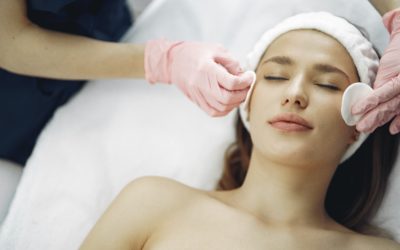Complications from plastic surgery are uncommon. Breast augmentation surgery is one of the safest cosmetic surgeries available. However, every patient heals differently. Some patients’ bodies react to the implant by forming excess scar tissue around the implant. This is called a capsular contracture. While fairly rare, it can cause breast implants to shift and the breast to “harden”.
During a breast augmentation, a pocket is created for the implant underneath the breast. As the body heals after this operation, a capsule forms, which is comprised of fibrous tissue. In most cases, the pocket remains open, giving the implant a natural look and feel. However, in some cases, a patient’s body can have a hyperactive healing response causing the scar tissue around the implant to tighten, and squeeze the implant. This pressure on the implant can cause the breast to feel hard and change appearance of the breast.
A capsular contracture is typically seen within two years following surgery. However, it can happen at any time. Capsular contracture is classified by “grades” ranging from 1-4, depending on the extent of the symptoms. The more severe the capsular contracture, the more likely surgery will be necessary to repair it.
- Grade I: This level of capsular contracture often goes unnoticed. The breast appears and feels soft.
- Grade II: With this capsular contracture, the breast will often appear normal, possibly with slight changes in appearance but will feel firm to the touch.
- Grade III: This more severe level will typically show signs of a capsular contracture. The breast will appear overly round and be hard to the touch.
- Grade IV: The most severe level of capsular contracture not only looks and feels abnormal but is also painful.
The most successful technique to treat capsular contracture is called a capsulectomy. During this procedure, your plastic surgeon will remove the scar capsule. This will release the implant back into the breast pocket and the body will then form a new capsule around the implant. It’s important to keep in mind when having a capsulectomy that there is a risk of another possible capsular contracture. The plastic surgeons at Gulf Coast Plastic Surgery will discuss your options and how to reduce your risk of a recurring capsular contracture. Implants placed under the muscle, as well as textured implants have both shown lower instances of capsular contracture complications.
If you’ve experienced pain or hardening of the breast after a breast augmentation, schedule a consultation with one of our award-winning plastic surgeons, Dr. Peter Butler and Dr. Jocelyn Leveque.




